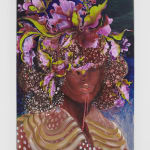-
Artworks
 Photograph: Phoebe d'Heurle.
Photograph: Phoebe d'Heurle.
 Photograph: Phoebe d'Heurle.
Photograph: Phoebe d'Heurle.
 Photograph: Phoebe d'Heurle.
Photograph: Phoebe d'Heurle.
 Photograph: Phoebe d'Heurle.
Photograph: Phoebe d'Heurle.
 Photograph: Phoebe d'Heurle.
Photograph: Phoebe d'Heurle.
 Photograph: Phoebe d'Heurle.
Photograph: Phoebe d'Heurle.
 Photograph: Phoebe d'Heurle.
Photograph: Phoebe d'Heurle.
 Photograph: Phoebe d'Heurle.
Photograph: Phoebe d'Heurle.
 Photograph: Phoebe d'Heurle.
Photograph: Phoebe d'Heurle.
 Photograph: Phoebe d'Heurle.
Photograph: Phoebe d'Heurle.
 Photograph: Phoebe d'Heurle.
Photograph: Phoebe d'Heurle.
A Catalyst for the fervor, 2020
Oil and acrylic on canvas36 x 24 in
91.4 x 61 cmSoldFurther images
-
(View a larger image of thumbnail 1
)

-
(View a larger image of thumbnail 2
)

-
(View a larger image of thumbnail 3
)

-
(View a larger image of thumbnail 4
)

-
(View a larger image of thumbnail 5
)

-
(View a larger image of thumbnail 6
)

-
(View a larger image of thumbnail 7
)

-
(View a larger image of thumbnail 8
)

-
(View a larger image of thumbnail 9
)

-
(View a larger image of thumbnail 10
)

-
(View a larger image of thumbnail 11
)

Firelei Báez casts diasporic histories into an imaginative realm, re-working visual references drawn from the past to explore new possibilities for the future. Drawing visual cues from folklore, sci-fi, and...Firelei Báez casts diasporic histories into an imaginative realm, re-working visual references drawn from the past to explore new possibilities for the future. Drawing visual cues from folklore, sci-fi, and fantasy, her paintings frequently portray female Afro-Caribbean figures sidelined by—and yet absolutely foundational to—Western historical macro-narratives. This portrait depicts the diasporic goddess-figure known as Maman Brigitte in Haitian vodou and as Oya within the Yoruba tradition. In Haitian lore, she was a catalytic force behind the onset of the Haitian Revolution, credited with inspiring priestesses to sound the drums that led troops of enslaved people forward to fight for their freedom. By depicting the deity in a manner that layers symbolic references to subaltern revolutionary histories and Western portraiture, Báez encourages a more complex view of the independence movements that occurred throughout the Americas during this period. From Maman Brigitte’s mouth hangs an azabache, a symbol of protection in Latin America and the Caribbean, carving out space within the art historical canon for healing inasmuch as resistance.Publications
Golden, T., Respini, E., Godfrey, M., Acevedo-Yates, C., & Russell, L. (2022). Firelei Báez: To breathe full and free (D. Norr, Ed.). New York, NY: Gregory R. Miller & Co., pp. 166. -
(View a larger image of thumbnail 1
)










